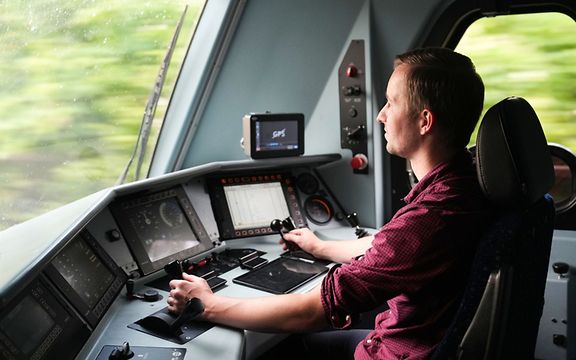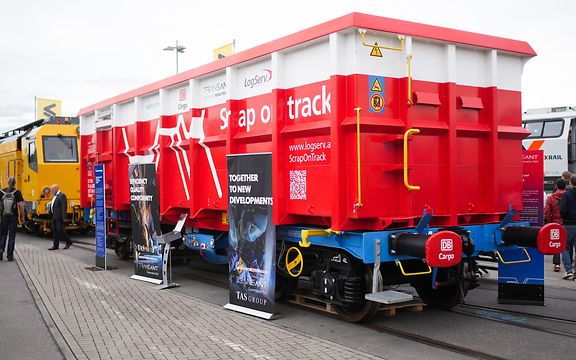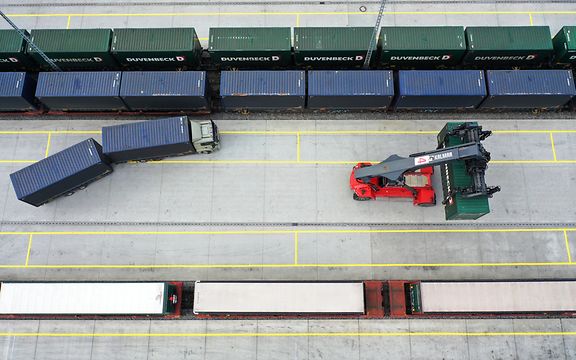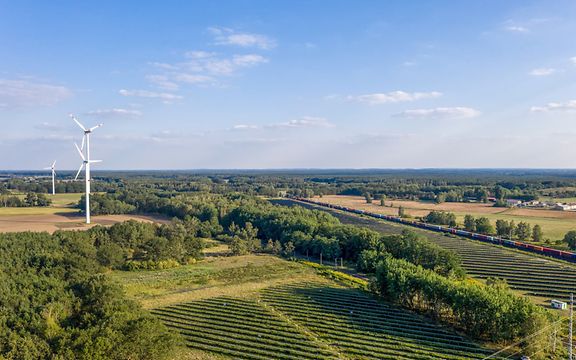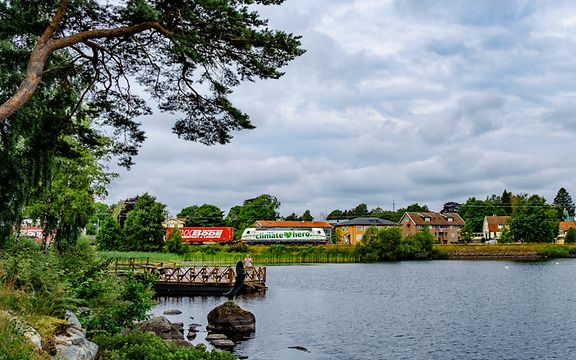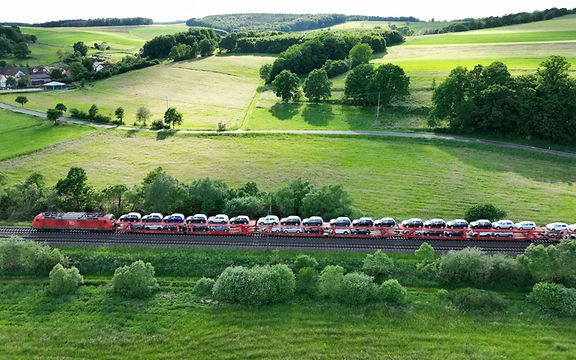Next stop: the terminal of tomorrow
The next phase is beginning in the ANITA research project for testing automated container logistics.
The forecasts are clear: Combined transport is set to experience massive growth in the coming years, with rail and road services expanding the most. This will be made possible thanks to transhipment terminals, which are connecting a growing number of customers to the rail network, giving them access to a green and climate-friendly way to move their goods from A to B.
This does, however, raise an important question: How can we make transhipment more efficient and flexible? The growing shortage of HGV drivers, who are indispensable for logistics, makes this issue all the more pressing, as does the steady shift towards Terminal 4.0. Here is where our ANITA project comes in. It focuses on innovative automation processes at our terminals and is an important step in the evolution of a fully automated transport process.
Four project partners, EUR 5.5 million, 39 months
What is ANITA? The project is dedicated to developing a fully automated HGV that will carry freight on the short distance between DB Intermodal Services’ container depot and the DUSS transhipment terminal in Ulm.
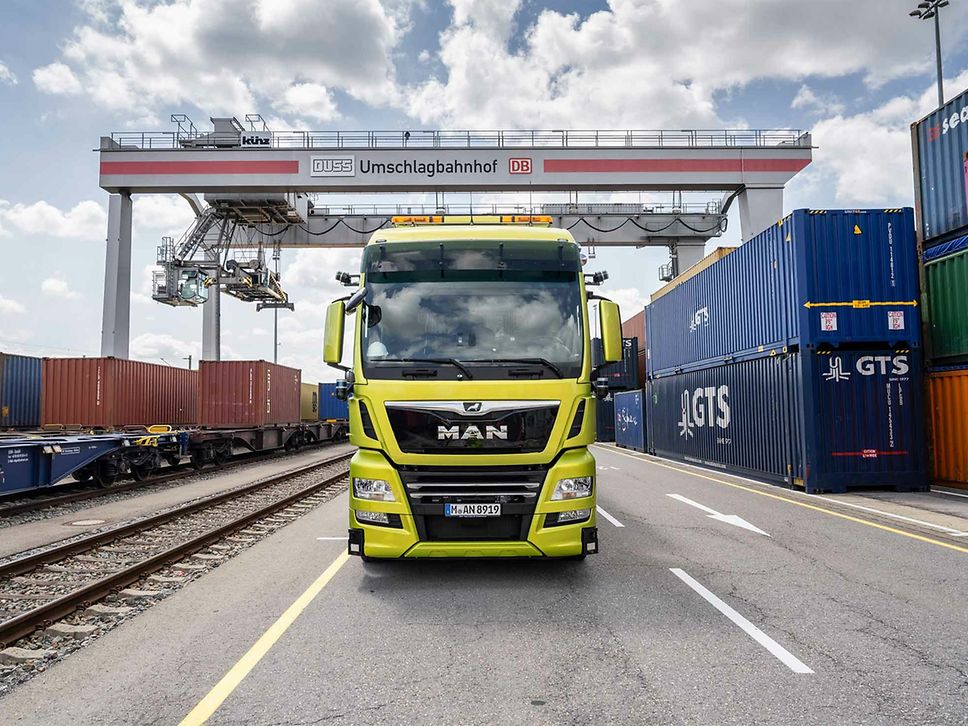
The consortium behind the project has four members: MAN Truck & Bus, DB Cargo, Fresenius University of Applied Sciences and Götting KG. Scheduled to run for 39 months, the project started in July 2020 and is funded by Germany’s Federal Ministry for Economic Affairs and Climate Action to the tune of EUR 5.5 million. The partners’ objective is to create an autonomous system for moving freight between different modes of transport and between the terminal and container depot in Ulm.
What’s the state of play now, at half-time? We spoke with Michael Heinemann, Managing Director at DB Intermodal Services GmbH, about the process behind the ANITA project, its current status and its ultimate goals.
Michael, can you tell us how ANITA differs from previous projects on self-driving HGVs for freight terminals? Michael Heinemann_ There have been several projects to test autonomous HGVs over the past few years. However, all of them kept the vehicles at a single, closed site. ANITA is different. Now, for the first time, we are using an HGV developed by MAN to link different sites, which are separated by almost 1 kilometre of public road with real traffic and complex influences. For example, the route features a roundabout, which poses a real challenge for our research and development team. The fully automated, self-driving HGV has to accurately analyse all traffic conditions and respond correctly in every situation, even if a car enters the roundabout unexpectedly.
The project has reached the halfway point. What have you achieved so far?MH_ Everything is going according to plan and we have completed the first phase of the project. So far, the researchers have mapped the route's infrastructure and interface points so that HGVs and transhipment equipment will be able to communicate with each other. This entailed monitoring and describing the people and machines involved in the different processes. It is a highly complex undertaking that needs to factor in all kinds of human decisions. For example, it has to incorporate features like the long-standing workplace routines and habits of HGV drivers and crane operators, such as using a nod to indicate that a container is ready for moving. The experts have to teach all of these rules to the algorithm so that we can begin the first autonomous HGV runs by the start of 2023 at the latest. Otherwise we won’t be on target with the project schedule.
How do the test drives work?MH_ At the moment, a developer is still present during the tests. They always have their hand on the steering wheel and can intervene if necessary. During the next stages, however, the driver will only be in the HGV to oversee operations, with the goal of ensuring that the vehicle is fully self-driving by the final stage. Then there will be no need for anyone to be in the vehicle to monitor its movements.
Project teams from MAN Truck & Bus, DB Cargo, the Fresenius University of Applied Sciences and Götting KG are working together on ANITA. What expertise do the different teams bring to the programme?MH_ The experts in charge of the details of each stage of the process have a real store of theoretical knowledge, and we at DB Intermodal Services have the hands-on expertise. In other words, we all have different skill sets that we can contribute to the project and move things forward step by step. In addition, we are in constant communication with one another, sharing information about the results of our work. This creates the ideal conditions for the project.
How exactly will developing an autonomous HGV in the ANITA project benefit Ulm and other sites?MH_ There will be several advantages. The route between the terminal and the container depot is a real bottleneck. Our transhipment vehicles are often stuck in long queues with other HGVs, tying up drivers. Which brings me to the next point: driver shortages. Every year, some 15,000 drivers leave the business in Germany. We have to make more logical and efficient use of this increasingly scarce human resource, so it’s crucial that we make progress on innovations and research projects like ANITA. In the future, these will help us to reduce the need for drivers on connections that always follow the same route and are therefore easy to manage. Instead, we will be able to deploy our drivers on transports that cover longer distances and that are currently beyond the capabilities of autonomous vehicles. The new system would enable us to shift containers around the clock – i.e. outside of peak times – so we could make more balanced use of the terminal’s and depot's capacities. The Ulm site alone accounts for about 20,000 transhipments per year.
Also, don’t forget the fact that many companies are increasingly relying on combined transport so they can use climate-friendly rail services instead of road haulage for the longest part of a connection. Using an electric autonomous HGV in Ulm will make the transfer CO2 free as well. At the moment, four diesel HGVs need up to 70 runs a day to ferry containers between the DUSS terminal and our container depot. The new system will open up tremendous scope for cutting emissions.
Looking ahead, what will the lessons from ANITA mean for the future, and what new ground is the project breaking?MH_ In the long run, we will be able to transfer what we learn to other terminals, ports and industrial facilities that also want to make use of autonomous vehicles. The project has enormous potential.
Learn more about the ANITA project
Project partners: | MAN Truck & Bus, DB Cargo, Fresenius University of Applied Sciences and Götting KG |
Project owner: | TÜV Rheinland technical inspection association |
Funded by: | German Ministry for Economic Affairs and Climate Action |
Funding: | EUR 5.5 million from the New Vehicle and System Technologies programme |
Project cost: | EUR 13 million |
Project start: | 1 July 2020 |
Duration: | 39 months |
Project website (German only): Project ANITA

